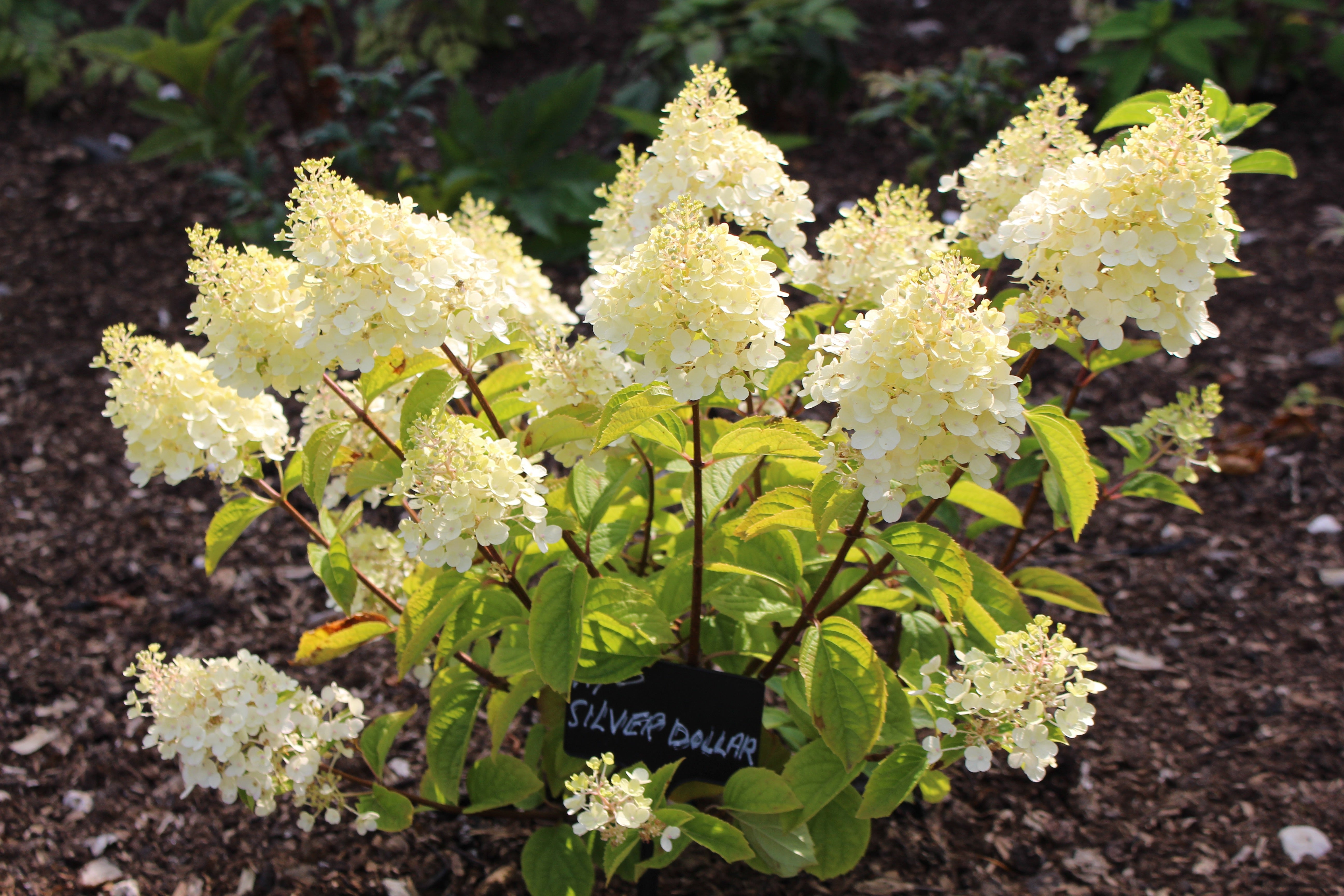Hydrangea paniculata 'Silver Dollar'
Approx. 0.5 litre pot
About this cultivar:
Hydrangea paniculata 'Silver Dollar' is another fantastic paniculata hydrangea from Dutch plantsman Peter Zwijnenburg, first seen in 1990. It gained the AGM prize (Award of Garden Merit) by the Royal Horticultural Society in 2008.
It produces large panicles of mostly of sterile flowers (bigger petals) which emerge light green and fade to almost pure white later on, turning very light pink in late summer and early autumn. A more compact form, almost miniature, this is suitable for a smaller garden or as a specimen plant.
I have no idea why it is called 'Silver Dollar'!?!? To sell better in the USA?!?! Great plant nonetheless!
- Position: Full sun, partial shade
- Soil: Almost any soil, grows well in Ballyrobert
- Flowers: June, July, August
- Other features: Grows well in Ballyrobert, Royal Horticultural Society Award of Garden Merit (RHS AGM)
- Hardiness: H5 - Hardy in most places throughout the UK even in severe winters (-15 to -10°C), Fully hardy - grows well in Ballyrobert!
- Habit: Clump forming, bushy
- Foliage: Deciduous
- Height: 90 - 120 cm (3 - 4 ft)
- Spread: 90 - 120 cm (3 - 4 ft)
- Time to full growth: 5 to 10 years
- Plant type: Herbaceous Perennial, shrub
- Colour: Green, white
- Goes well with: -
About this genus:
Hydrangea (hy-dran-je-a) get its name from the Greek hydor, water, and aggeion, a vessel, or vase, in reference to the shape of the seed capsule. It is a classic garden plant. The genus Hydrangea contains about 75 species of shrubs, trees and woody vines, along with hundreds of named cultivars. Hydrangeas are grown primarily for their large flower clusters that vary in shape from flat lacecaps, to long panicles, and large, round mopheads.
At Ballyrobert we only really grow cultivars from the species paniculata (pointed panciles of flowers) and arborescen (mopheads of flowers). You may read lots of different things about pruning paniculata cultivars. We find the best thing to do is shear them back hard to about three feet from ground level in March (spring) each year. For the mop-headed Hydrangea arborescen cultivars we cut them back further to ground level each March. Strange, as the name (arborescen means 'tree like') would imply you leave them alone.....
Hydrangeas grow best in sun or partial shade and are not too fussy regarding soil (as long as it isn't extreme). We typically grow them in mixed borders, and in our garden at Ballyrobert we have them almost everywhere!


